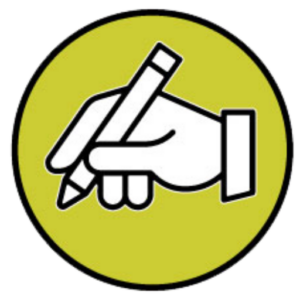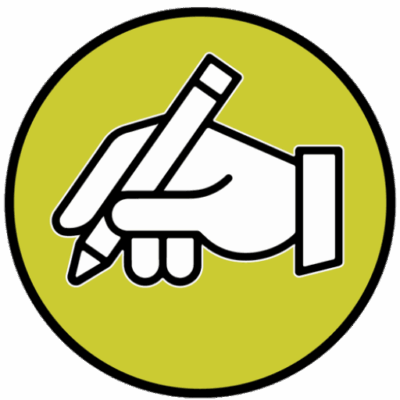The influence of the skull is visible under every head if you look for it. The basic structure of every head is determined by the structure and proportions of the underlying skull.
This classic 1977 book (paperback edition, ©2000), whose foremost author was one of the great artistic anatomy teachers of the twentieth century, is an invaluable instructor and reference guide for any professional, amateur, or student artist who depicts the human form.
Revealing the drawing principles behind one hundred inspiring masterpieces, the book presents work by Leonardo, Michelangelo, Rubens, Raphael, Titian, Rembrandt, and other greats. These superb portrayers of figures knew that the secret of drawing them was seeing how underlying bone and muscle structures mold the body’s surface forms. Readers are shown how to learn from these great examples as the authors guide them through all the steps they would take in a life class or studio working with live models.
Demonstrates a three-step drawing method exploring outline, contour, and the capture of light, volume, and mass. Many of us want to learn ”how to draw“; but as artist Anthony Ryder explains, it‘s much more important to learn what to draw. In other words, to observe and draw what we actually see, rather than what we think we see.
What art student doesn’t groan at the hackneyed problems too often assigned in art classes, such as a still life, chianti bottles, old chairs, and large cloths draped over the whole scene? Here, in the first book ever of its kind, is a collection of interesting and original ideas for drawing projects, contributed by art instructors from all over the United States (and a few from Canada, Great Britain, and Australia) who have invented successful alternatives to humdrum exercises.
Turn your candid snapshots into remarkable artwork that truly captures the personality of your cherished animals. In Drawing Realistic Pets from Photographs, you’ll find foolproof instructions that will have you creating impressive drawings in no time.
Don’t let a lack of natural artistic ability or drawing experience discourage you. Best-selling author and long-time art instructor can teach everyone to draw. Her fail-proof grid method and simple penciling techniques have led thousands of beginners to undeniable success.
Anyone who can hold a pencil can learn to draw. In this book, Dodson shares his complete drawing system—fifty-five “keys” that you can use to render and subject with confidence, even if you’re a beginner. These keys and dozens of practice exercises will help you draw like an artist in no time.
You’ll learn how to:
- restate, focus, map, and intensify
- free your hand action, then learn to control it
- convey the illusions of light, depth, and texture
- stimulate your imagination through “creative play”
Everyone wishes that they could faithfully reproduce the world around them—wishes that they could draw what they see. This is a book that teaches you how. Rudy de Reyna believes that there are only four basic shapes in nature—the cube, the cylinder, the cone, and the sphere. Every object is based on one of these geometric shapes, although the shape itself may be greatly modified. once you can see the basic shape of an object, you can draw that object no matter how much detail it may contain.
Part one discusses the fundamentals of drawing, There are clear, concise, and lavishly illustrated projects. Each project is arranged so that one is slightly more complex than the one before.
In part two, the author explains the use of media not usually described in a drawing book—wash, opaque, watercolor, and acrylic He provides exercises to help the student gain proficiency in handling each of them.
We all draw as children: we scrawl a sunbeamed circle for a face and dots for eyes, and then we move on to portraits of Mom with an upside-down U for hair and Dad with trousers up to his armpits. But sooner or later, almost everyone stops. In this delightful, revelatory book, Peter Steinhart explores why some of us keep on drawing–and what happens when we do.
Combining the scientific, the historical, the anecdotal and the personal with marvelous ease, Steinhart asks some provocative questions: Why do drawings often speak to us more eloquently than paintings? What is the mind doing when we draw? Why is so much drawing of the face and of the nude figure? What is the dynamic between a clothed artist and a naked model?
Steinhart makes clear that, at its best, drawing is a spontaneous expression of what we see, an “undressed art” unencumbered by affectation or calculated fashion. And he reveals its many rewards: it helps us to focus, to slow down, and to really see the world and ourselves. At once erudite and engaging, The Undressed Art illuminates the allures and joys of a familiar art–and inspires us to pick up a pencil and draw.
Translated into more than seventeen languages, Drawing on the Right Side of the Brain is the world’s most widely used instructional drawing book. Whether you are drawing as a professional artist, as an artist in training, or as a hobby, this book will give you greater confidence in your ability and deepen your artistic perception, as well as foster a new appreciation of the world around you.
The method focuses on skills such as edges and lines, negative space, relationships, light and shadows, and drawing from memory and imagination. She drew inspiration from neuroscience, particularly the research on cerebral hemispheres.
This revised/updated fourth edition includes:
• a new introduction;
• crucial updates based on recent research on the brain’s plasticity and the enormous value of learning new skills/ utilizing the right hemisphere of the brain
• new focus on how the ability to draw on the strengths of the right hemisphere can serve as an antidote to the increasing left-brain emphasis in American life—the worship of all that is linear, analytic, digital, etc.
• an informative section that addresses recent research linking early childhood “scribbling” to later language development and the importance of parental encouragement of this activity
• and new reproductions of master drawings throughout
Based upon the author’s successful workshops, Drawing for the Absolute and Utter Beginner helps new artists create competent, often eloquent drawings. A series of progressive lessons demonstrates such essential skills as recording edges, creating dimension, adding accuracy, developing value, balancing compositional elements, and drawing the human face, both frontal and profile views.
Step by step, readers learn how to create a reasonable likeness of an object and give it spatial depth using such simple black-and-white mediums as pens, pencils, charcoal, and graphite wash. Inspirational examples and tips for success from beginning students who have worked on the same material confirm readers’ successes and allow readers to consider the advice and impressions of others at the same level.
Too many books of art instruction sell high but deliver low, cynically layering truncated photo-demonstrations accompanied by inadequate captions over puny discussion of materials and technique.
Sherry Camhy’s book belongs to a rarer kind, the sort that is determined to help and knows how. Ms Camhy is a much-honored artist. Her resume, unobtrusively included in the book, offers evidence of how she has developed the ability to produce the many masterly drawings that also appear in it. On well-designed and well-printed pages, they are a pleasure in themselves. And the accompanying advice, discussion, and extensive information are informed by an unfailing artistic sensibility and an impressive talent for teaching.
There is vital information here, much of it not easily found elsewhere. And all of it is communicated with conviction and elegant clarity. You sense that this detailed, wide-ranging advice, which focuses on the pencil but covers almost all drawing media, is the McCoy that makes a true difference. It stirs both ideas and ambition. That goes, too, for the vivid and cogent demonstrations from which, having studied the preceding pages, one is well equipped to benefit. This is a fine, intelligent book, a delight for any reader interested in drawing, and one that will enhance the enjoyment of those keen to improve their skills.
(review courtesy of Cliff Hopkinson, copyright 2002)
Anatomy for the Artist by Sarah Simblet, with photographs by John Davis, is a valuable resource for students and teachers of fine art drawing. It bridges the gap between anatomical knowledge and artistic representation, particularly enhancing the understanding of gesture and movement in drawing the nude figure.
Comprehensive Anatomical Detail
The book provides an in-depth look at human anatomy, which is crucial for any artist specializing in figure drawing. Detailed illustrations and explanations cover muscle structure, bone structure, and the nuances of different body parts.
Artistic Interpretation
Simblet’s approach goes beyond mere anatomical study; she delves into the artistic representation of the human form. Emphasizes capturing the essence and grace of the human body, not just its physical structure.
Photographic Content
John Davis’s photographs complement Simblet’s illustrations, providing real-life references. These high-quality photographs show the human body in various poses and actions, not only instructively but also inspirationally.
Gesture and Movement
Special attention is given to conveying gesture and movement in drawings, which is critical for bringing life to figure drawings. The book guides readers through translating the dynamism of the human form onto paper, a vital skill for accurately capturing the nude model.
Teaching Resource
This book is ideal as a reference book for students learning to draw from the nude model. It helps students understand the underlying structure of the body, improving their ability to render realistic and dynamic poses.
An excellent companion for live model sessions, this excellent book provides a deeper understanding of what lies beneath the skin. Students can use the book to reference specific anatomical details they observe in live models, enhancing their learning experience.

